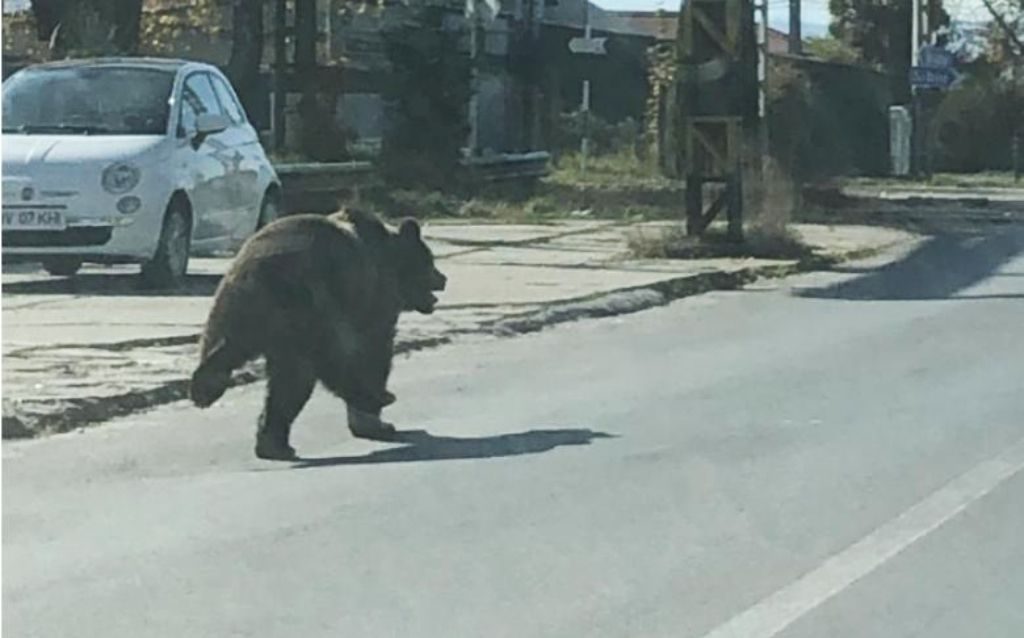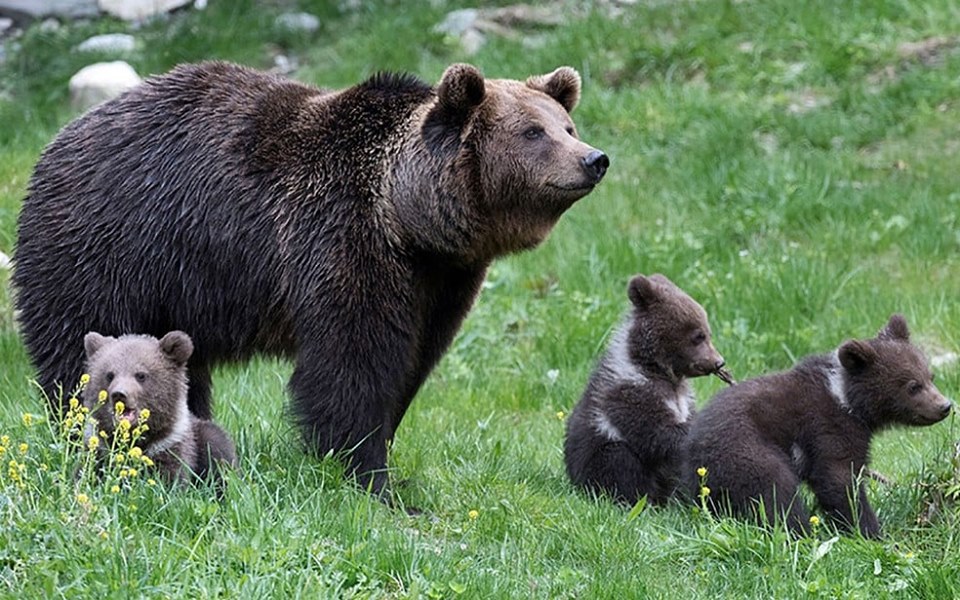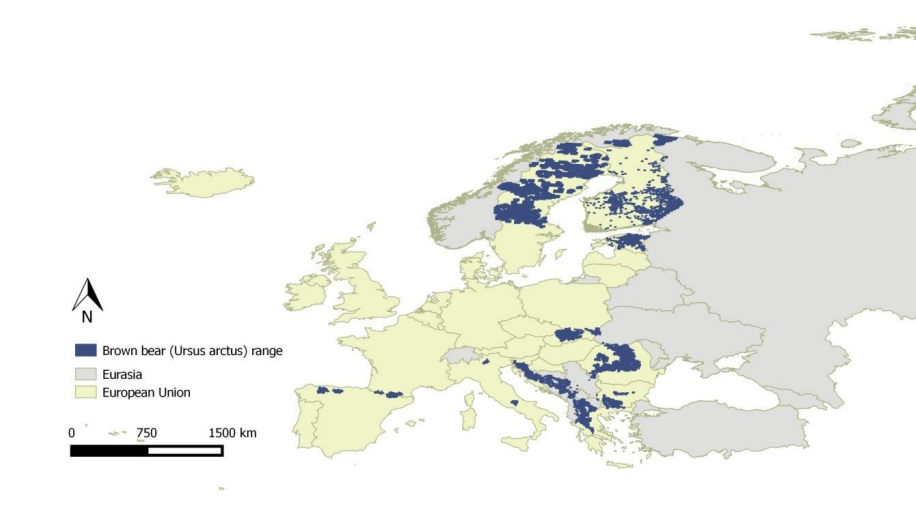One man was killed, another injured in bear attacks over the weekend. Several other, bear-related conflicts were reported last week as well. Bears were spotted in different Romanian cities and villages; the gendarmerie of Hargita/Hargitha County alone was alerted at least three times because of bears. The big game entered a stairwell in Fogaras/Făgăraș in Brassó/Brașov County, and the authorities from Szeben/Sibiu County had to scare off a bear from Medgyes/Mediaș, while the authorities from Hargita County are looking for an injured bear and her two cubs. A bear was also hit by a car and killed last week in Kovászna/Covasna County. These are just a few cases covered by the media.

A 47-year-old man was killed by two bears on Sunday in Bákó/Bacău County, in the forest next to Bârsănești. The man and his 14-year-old nephew were collecting mushrooms when they were attacked by the bears for an unknown reason. The boy got away, and when he reached Bârsănești, he alerted the authorities. The man died from his injuries by the time the gendarmerie and the ambulance arrived to the scene.
The other attack happened in Beszterce/Bistrița County, next to Simontelke/Simionești. The 39-year-old man was attending an organized wild boar hunt as an animal driver when a bear scratched and bit his face, neck, and hip. The victim’s injuries are not life-threatening.
Romania is facing a bear crisis. Bear-related conflicts are reported on a daily basis throughout Transylvania and Moldova. According to a stock estimate ordered by the Ministry of the Environment, 6,450-7,200 wild bears lived in the country this past spring. According to the Ministry, since the beginning of the year, local hunting associations from 13 counties have applied for the shooting or relocation of a total of 73 dangerous bears. The ministry approved the shooting of 34 bears and the relocating of one.
The problem is the most intense in Szeklerland: Hargita County applied for the shooting of 14 bears (the ministry approved eight), Maros County for 12 (seven approved), and Kovászna County for seven (four approved). But other counties face the problem as well, Arges, Suceava, and Prahova Counties also applied for shootings.
The ministry did not publish the stock estimate for counties, but the numbers available for Szeklerland were presented. As estimated by local hunting associations, 1,900 bears live in Hargita County, another 1,500-1,600 in Kovászna, and approximately 1,300 in Maros. Wildlife management specialists underlined, the numbers may not be accurate, as they think that multiple bears may have been double-counted because the same bears appeared in different areas.

An action plan for the conservation of the bear population from last year shows that, considering the ecological, social, and economic aspects of Romania, the optimal number of bears would be 4,000. This means that almost 3,000 bears should be killed or relocated. But animal right organizations, such as WWF Romania, are very critical of this number.
To resolve the problem, the Senate in Romania voted on a bill one month ago to remove the big game from the list of strictly protected species. If this new bill is accepted by the Chamber of Deputies, the brown bear would be placed in the category of species eligible for seasonal hunting. This is needed to regulate the bear population and to decrease the number of animal-human conflicts. But even if the Parliament of Romania accepts the bill, nothing will change in practice because without the approval of the European Union, big-game hunting cannot begin.
As presented in the Large Carnivore Management Plans of Protection: Best Practices in EU Member States study, issued by the European Parliament, the regulation of the European wildlife and the protection of natural habitats started in 1979. This was when the Council of Europe’s Convention accepted the law of European Wildlife and Natural Habitats (also known as The Berne Convention), which was followed by the Habitats Directive, a legal framework on nature conservation established in 1992. Since then, according to the directive, large carnivores are protected or strictly protected, meaning that justification is needed to harvest these species and for a derogation to be allowed under specific circumstances.
According to EU regulations, a derogation should be delivered only if the population maintains its Favourable Conservation Status (FCS) after the removal of individuals. A status is deemed favorable when a population is maintaining itself on a long-term basis as a viable component of its natural habitats, the natural range of the species is neither being reduced nor is likely to be reduced for the foreseeable future, and there is, and will probably continue to be, a sufficiently large habitat to maintain its population on a long- term basis. Hence, the maintenance of FCS is a post-requisite in the Habitats Directive’s mandate.

According to the study, for the majority of EU countries, the brown bear’s Conservation Status is considered bad or inadequate, meaning that the species did not reach a Favourable Conservation Status as mandated by the Habitats Directive – data for Romania specifically is not available in the study. But the study also underlines that human-bear conflicts exist and that these conflicts are very diverse and mainly connected with the bear’s opportunistic foraging and consumption of food.
However, according to the study, the removal of large carnivores is not the solution for these conflicts. It underlines that removal is ineffective or even counterproductive, as the rate of removal necessary to observe a significant change is so high that it would compromise the conservation principle of the Habitats Directive.
The study says that the member states should focus on preventing and not on acting. But if prevention is not sufficient, other solutions can be applied. Still, derogations related to the taking, capture, and removal of bears are critically evaluated and only exceptionally accepted by the EU, the study underlines. So it will be very difficult for Romania to ask for the removal of 3,000 bears….
Title image: The brown bear is protected by the EU and by national law. Photos: Medveles Erdélyben – Gyergyószentmiklóson/Facebook